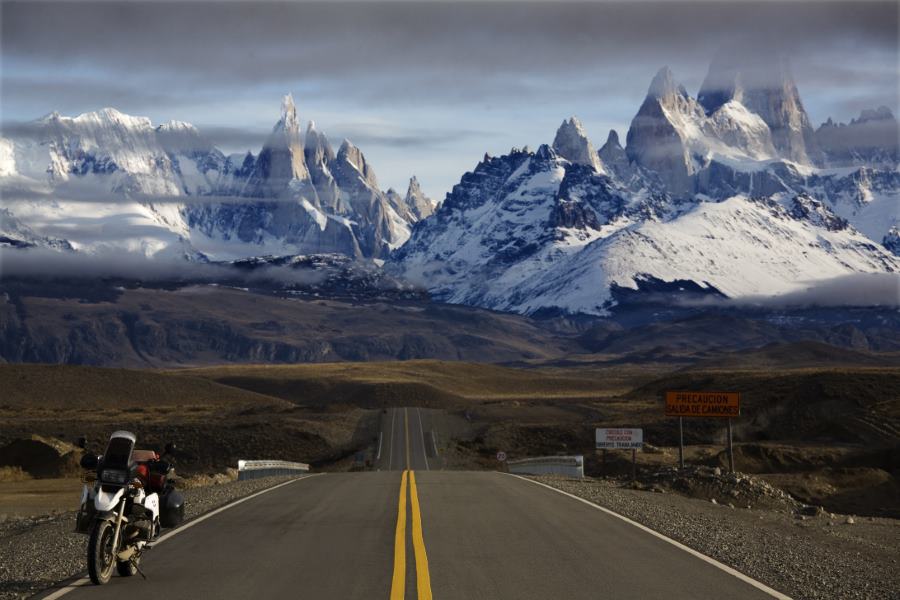|
Sumbawa Indonesia: Hard Way Round. Wadu Pa'a - Remote Hindu/Buddhist Site at mouth of
He sideled up beside me hand outstretched. I was in Mataram Mall, Lombok's sole concession to the god's of 21st century consumerism. My first thought was: 'He's selling timeshare.' But I was wrong. Husni was an English teacher from Bima, in Mataram for an in-service activity. When I told him I intended to visit Bima he whipped out his mobile and said, "Make sure you go to Wadu Pa'a." I'd never heard of the place. His photos intrigued me. Shivaite lingams, merus, meditating Buddhas and Ganeshas, carved into an isolated escarpment at the mouth of Bima Bay. The die was cast. I had to see them for myself.
A couple of weeks later and I was heading out of the gates at Monalisa Cottages on Hu'u Beach, 43 km from Dompu. It was early. The cool breeze shook free the cobwebs of a good night's sleep and before long I was rolling along on my trusty KLX150. I surged past the Bugis fishing village facing Cempi Bay. The previous day's catch of white bait was already salted and laid out on mats waiting on the sun to do its job. Kids frollicked in the shallows, the men tended their nets and the women were hanging out the washing. People waved as I passed by.
The road left the shore line and climbed into teak country. Extensive plantings ensured that when the kids grew up and married there would be plenty of timber to buikd a house and some more to sell to get the newly-weds off to a good start.
Traffic was light, the road good. I motored through Rasabau village always on the lookout for a runaway kid, meandering geriatric or mangy hound on the prowl who's thinking about his next meal instead of what's coming around the bend. Adu village came and went and before long I was in Dompu's suburbs winding my way past the slow-moving bemos trawling the road for fares. Over the bridge, turn right, up the hill, follow the sign - Bima straight ahead. Into the Pertamina servo to fill up and then on again - next stop Sila. The road dropped down through a series of sweeping bends before leveling out to pass through farmland for the final blast into Sila, a largish market town where I'd have to turn left.
I pulled up to ask directions. The turn off was just ahead, marked with a sign that pointed the way to Donggo, ancestral home of the Dou Donggo people - Sumbawa's original inhabitants. They had resisted conversion to Islam since 1640. They retreated to the mountains when the Ruler of Bima, Ruma Ta Mu Batu Wadu, embraced Islam to become Sultan Abdul Kadir. However, in the 1930s they succumbed to the sugar-coated blandishments of Dutch missionaries. Their status today is somewhat ambivalent, their traditions slowly being eroded and there have been some conflicts with the local authorities in recent years.
The road north took me through tiny villages. The further I went, the drier the country became. The road narrowed and the population thinned out. I wound inland, traversing dry hills capable of supporting goats and snakes - but little else. Bima Bay appeared in the east a narrow finger of sea, sheltered and secluded: safe haven for centuries of seafarers. Blue water lapped the scrubby shoreline watched over by the occasional white-faced sea eagle.
I reached Bajo, a village inhabited by sea gypsies turned landlubbers. But the rthyhm of the waves still thrummed in their veins and the waters of Bima Bay lapped at their front steps. I asked directions and was told to keep heading north beyond Soromandi village.
I pressed on for a few more kilometres and asked directions from some teenage girls babysitting youngsters out front of their house. They looked a bit taken aback being approached by this lone rider out in the backblocks of Sumbawa. They pointed north. I continued on. The road became narrower and led to a village. Then it ended with a sharp left turn into a narrow cobbled street that ran between houses. This was not the way.
I asked the first person I met and he directed me back to whence I'd come. More enquiries, this time at a tiny shopfront where a tyre was being repaired. A young bloke offered to show me the way. It wasn't far so he jumped on his bike and I followed.
We went back past the babysitters. The road wound inland rising over a ridge and then down to run alongside a small inlet. My guide turned right off the road and carried on across dry mud flats adjacent to the sea and bordered by mangroves. We parked the bikes and walked a short distance to a man-made path that ran below a spur, the sea lapping at its base.
Before long we came to a wire fence and a gate. A few steps led up to a narrow, flat shelf at the base of a low escarpment. This was Wadu Pa'a - "Carved Stone' in the Bimanese language. The first group of merus were badly eroded but other carvings were in very good condition, especially the seated Buddha. The lingams had been executed with the usual degree of artistic licence that accompanies such efforts. There were carvings of candi in the typical Hindu style - reminiscent of Prambanan temple in Java - and one badly eroded Ganesha.
Standing there I could not help but wonder what life would have been like back in the 700s when the first monks entered the narrow mouth of Bima Bay to establish their hermitage; it later became a far flung oupost of the Kingdom of Airlangga. Lost to time for hundreds of years, visited now and then by the seafarers who plied the coast, the carvings existence only became known to a wider audience in 1910 when a Dutchman catalogued the first investigation of the site. Since then it has continued to exist on this lonely shore, forgotten and undistubed except for the few visitors who stop by to admire and pay homage to the ghosts of the past. I felt privileged to be able to count myself as one of them.
Last edited by kotamarudu; 28 Apr 2015 at 06:09.
|



























 Linear Mode
Linear Mode










